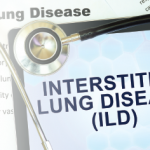
Image Credit: Gajus/shutterstock.com
Distinguishing between IPF and NSIP is the single biggest challenge in the interstitial lung disease world.
SAN FRANCISCO—“Interstitial lung disease is the last bastion of great medicine,” according to Paul Noble, MD, chair, Department of Medicine, director, Women’s Guild Lung Institute, Vera and Paul Guerin Distinguished Chair in Pulmonary Medicine, Cedars-Sinai Medical Center, Los Angeles. Making it great medicine, he said, are the many things still unknown about this disease.
In a presentation titled, The Changing Landscape in Fibrosing Lung Diseases, held at the 2015 ACR/ARHP Annual Meeting, Dr. Noble traversed the challenging terrain of accurate diagnosis of interstitial lung disease (ILD) given the multiple connective tissue disorders that may underlie ILD, such as scleroderma and rheumatoid arthritis (RA), as well as the many patients who fall into the gray area of undifferentiated connective tissue disease in which the disease has not yet fully revealed itself.

Dr. Noble
Dr. Noble focused his talk on the large gray area of undifferentiated connective tissue disease in which most patients with ILD fall and, in particular, on those patients with idiopathic interstitial pneumonia with autoimmune features.
Once connective tissue disease is excluded as an underlying cause of ILD, he said that an accurate diagnosis boils down to one of two conditions—idiopathic pulmonary fibrosis (IPF)/usual interstitial pneumonia (UIP) and nonspecific interstitial pneumonia (NSIP). Most patients (approximately 70%) will have IPF, and 15–25% will have NSIP.
“Distinguishing between IPF and NSIP is the single biggest challenge in the interstitial lung disease world,” he said.
Driving the need to distinguish between IPF and NSIP is the drastic difference in prognosis between the two conditions, as well as advances in treatment that now permit more targeted treatment of disease. Rather than treating all patients with fibrosing lung disease with immunosuppression therapy, as was done in the past, he said that newer treatments now permit better treatment for patients based on the underlying cause of ILD. Most patients with IPF will succumb within five years without a lung transplant, according to Dr. Noble, who also said that new drugs slow disease progression but still don’t make the patient better.
Patients with NSIP rarely need a transplant, he said, and these patients have a better prognosis with immunosuppression therapy.
Dr. Noble’s presentation focused on IPF and NSIP, the how and why of distinguishing between them, as well as promising therapies emerging to treat IPF.
Distinguishing Between IPF & NSIP
Recognizing the different patterns of fibrosis between IPF and NSIP is critical to diagnosis and, even in the best of pathologists’ hands, is not easy, he said. He emphasized that definite IPF, in which honeycombing is evident on high-resolution computed tomography (HRCT), should not be biopsied, because that would do more harm than good.

